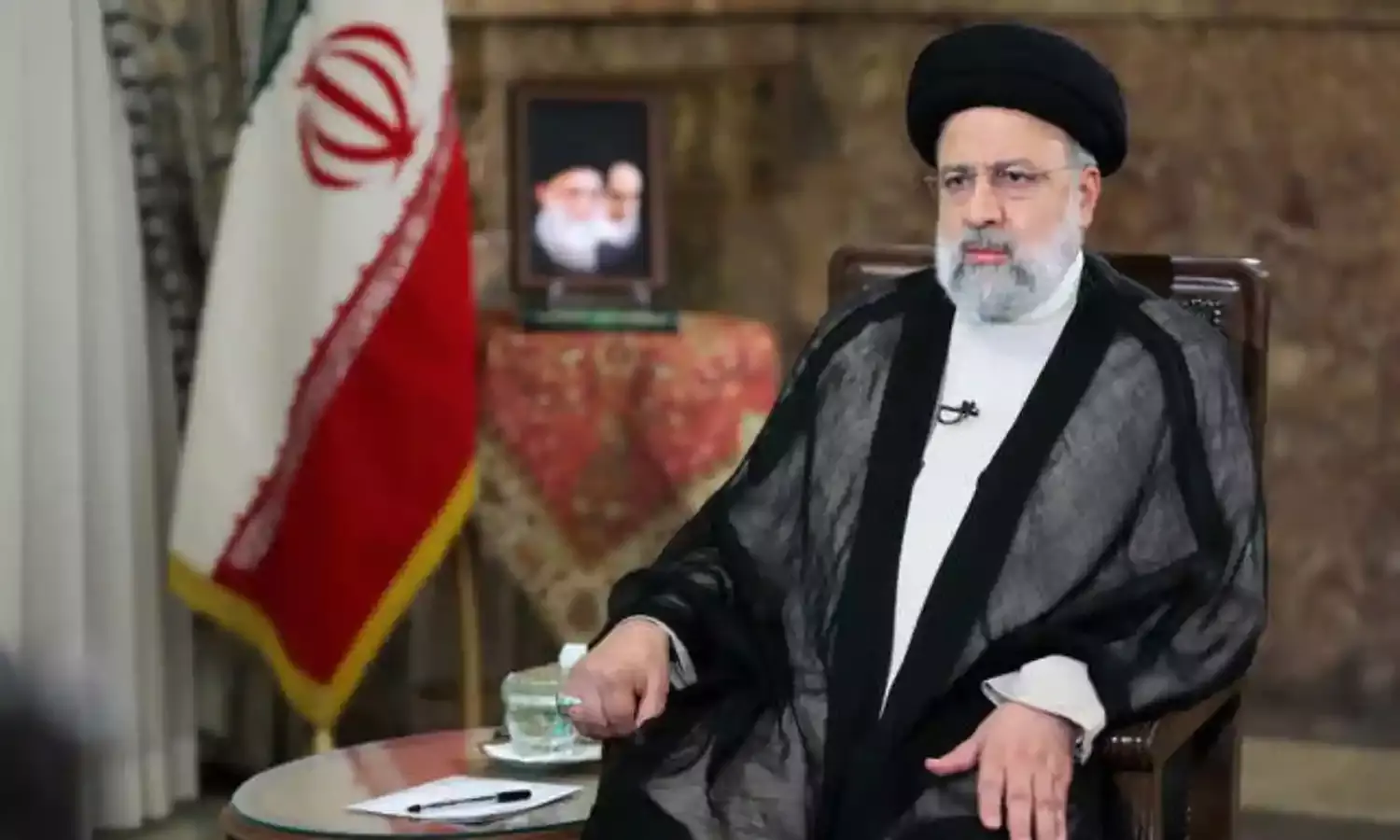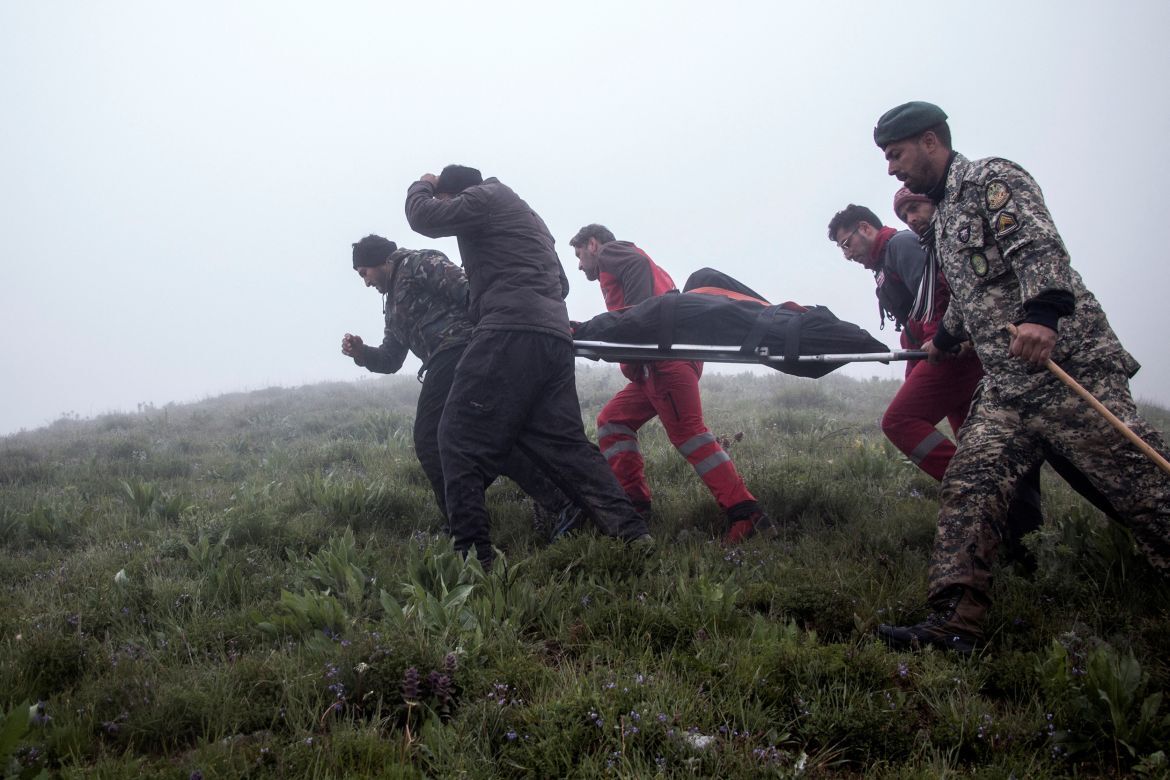Late Iranian President Raisi Had Strong Ties With India
He worked for strong economic ties with South Asia;

The tragic death of the Iranian President Dr. Ebrahim Raisi in a helicopter crash in his country on May 19, will be mourned in India, Sri Lanka, and even Pakistan, with which he had serious differences over terrorism.
He had built strong economic ties with India and Sri Lanka, though there was no noticeable progress vis-à-vis Pakistan, partly because its economy was in a shambles.

Asia as such was the core of the Raisi government’s foreign policy. Raisi had criticised the “western-oriented” foreign policy of his predecessor Hassan Rouhani (2013-21). The Raisi administration which began in August 2021 promised to be “Asia-centred” in its foreign policy.
President Raisi had strong ties with India too. India was lucky that Raisi did not attach importance to the shabby way in which the Modi regime was treating Indian Muslims.
Shipping Minister Sarbananda Sonowal went to Tehran on May 13 for the signing of a 10-year contract between the India Ports Global Ltd and the Maritime Organisation of Iran. Under the pact, India will invest around U$120 million to develop and operate the Shahid Beheshti Port in Chabahar besides offering a credit of US$ 250 million for infrastructure upgrading.
The new contract replaces the initial pact signed in 2016 to keep India’s operations at the Shahid Beheshti terminal of Chabahar port going. The deal is extremely critical to India as it opens up a faster route to lucrative world markets. The overall investment by India in the Chabahar port was expected to be US$ 500 million.
The Chabahar port’s unique location, just about 550 nautical miles from Kandla port in Gujarat, gives India easy access to Afghanistan, the Central Asian countries and Europe.
Chabahar is also part of the proposed multimodal transport route also known as the International North-South Transport Corridor (INSTC). This corridor will link the Indian Ocean and Persian Gulf to the Caspian Sea via Iran and to northern Europe via Saint Petersburg. According to industry estimates, shipments through the INSTC route will take 15 days less compared to the Suez Canal route.
India is already operating the Chabahar port under the existing limited-scope agreement.
India has so far avoided being caught in the United States-Iran crossfire over the US sanctions by convincing the Americans about the strategic importance of its bilateral pacts and got a waiver. The Joe Biden administration has, however, said on record that the latest deal is not exempt from sanctions.
India-Iran bilateral trade stood at US$17 billion in 2018-19. However, following the Donald Trump administration’s May 2018 withdrawal from the 2015 nuclear deal and re-imposition of sanctions on Iran, trade was badly hit. The value of commercial exchanges between Iran and India declined to US$ 4.8 billion in 2019-2020 and US$2.1 billion in 2020-2021.
Raisi had visited Sri Lanka in April this year despite the growing tensions in the Middle East and Western sanctions against Iran. He came to Sri Lanka to sign five MoUs and participate in a public ceremony to mark the inauguration of the Uma Oya Multipurpose Development Project (UOMDP), a joint Lanka-Iran venture.
Since 2013, Iran has also been using its economic ties with Sri Lanka to build a strategic partnership with the island nation. According to Michael Rubin of the American Enterprise Institute (AEI), Iranian outreach to Sri Lanka took advantage of Sri Lanka’s frustration with the West.
Between 1983 and 2009 when Sri Lankan forces fought a war against the Tamil Tiger separatists, a war which the West opposed, Iran supported the Sri Lankan government. When the United Nations Secretary General Ban Ki-moon agreed to appoint a special panel to investigate human rights violations by Sri Lanka during its final military drive to eradicate the Tamil Tigers, Iranian Minister of Transportation Ali Nikzad lambasted the UN panel, describing it as a “pet of the Western nations.”
If any organisation or country takes action that will harm Sri Lanka, Iran will always very strongly oppose such a move, Nikzad added.
The then Iranian Foreign Minister Manouchehr Mottaki called his Sri Lankan counterpart to congratulate him on successfully ending the war and remind him that Iran had always supported Sri Lanka’s unity. Mottakki also said: “Iran is sincerely committed to the development of Sri Lanka, whom we consider to be a true friend.”
According to Rubin, in 2005, during the war, Iran supplied USD 150 million worth of weaponry to Sri Lanka.
Iran’s Foreign Minister, the late Hossein Amir-Abdollahian (he also died in the helicopter crash along with Raisi on May 19) had held talks with the Sri Lankan President Ranil Wickremesinghe in April this year and stated that Iran’s economic and industrial sectors, including the Ministry of Energy, were prepared to develop projects in Sri Lanka.
The Iranian-Lankan Uma Oya Multipurpose Development Project (UOMDP) which was inaugurated by Dr.Raisi and the Sri Lankan President last month is one of the largest irrigation projects in Sri Lanka and the largest Iranian-Lankan project in the island.
The UOMPD’s primary objective is to alleviate water scarcity in the south-eastern dry region by redirecting an annual average of 145 million cubic metres (MCM) of excess water from the Uma Oya basin to the Kirindi Oya basin. About 4,500 hectares of new land and 1,500 hectares of existing agricultural land in the dry Monaragala District will receive irrigation water.
Parts of Badulla, Monaragala, and Hambantota districts will also benefit from 39 million cubic metres (MCM) of water for drinking and industrial purposes, while generating and adding 290 GWh of electrical energy annually to the National Grid.
In 2007, the then Sri Lankan President Mahinda Rajapaksa made an epoch-making visit to Iran and signed MoUs on development projects worth more than US$ 1.9 billion. The following year Iranian President Mahmoud Ahmadinejad visited Sri Lanka and inaugurated a US$ 750 million project to upgrade Sri Lanka’s Sapugaskanda petroleum refinery.
Iran had agreed to provide no interest credit terms for petroleum purchases (approximately USD 700 million) and stated that it would finance the Uma Oya Project (USD 450 Mn).
Iran’s Deputy Oil Minister Roknoddin Javadi had said that Iran was prepared to provide 40,000 to 45,000 barrels per day, enough oil to supply Sri Lanka’s main oil refinery.
The Sri Lanka and Iran epoch-making ‘tea-for-oil’ barter agreement is now making strong progress and Sri Lanka has already settled payments to the tune of over USD 20 million to Iran.
“This agreement was to settle a total of USD 250 million for purchases made by Ceylon Petroleum Corporation (CPC) for oil imported from Iran in 2012”, Chairman Sri Lanka Tea Board (SLTB) Niraj de Mel said in a special interview with ‘Daily News Business’.
“Since then we have made very strong progress and up to December 2023 we have settled around USD 20 million,” de Mel said.
In 2016 Iran used some of its hard currency windfall to lease Sri Lankan Airlines aeroplanes, effectively helping Sri Lanka’s national carrier to reduce its US$ 1 billion debt, Rubin said in his article. Institute.
President Raisi had also visited Pakistan in April this year for three days, though the two countries had attacked each other militarily in January.
The border tensions escalated when Iran carried out air attacks across the border in Pakistan killing two children. The Iranian state media said the attack was targeting two bases of the armed group Jaish al-Adl. Pakistan retaliated by firing a missile into Iranian territory and recalling its ambassador from Tehran.
But the two neighbours decided to de-escalate tensions, with Tehran rushing its top diplomat to Islamabad to mend ties. They agreed to confront the “menace of terrorism” together, especially in the border region.
Islamabad and Tehran have been aiming to boost bilateral trade, which currently stands at US$2 billion. Raisi had set a target of US$ 5 billion. But with Pakistan’s economy being in shambles, progress towards the goal is doubtful.
However, there is a sizable informal trade between the two countries, including Liquified Petroleum Gas (LPG) and crude oil. Iran also provides electricity to Balochistan province and other border areas in Pakistan.
A plan to build a pipeline to export Iranian natural gas to Pakistan was stalled amid opposition from the United States over Iran’s nuclear programme.

